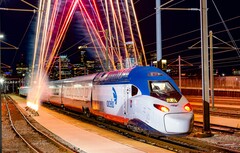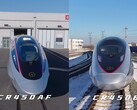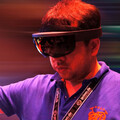Since August 28, the Nextgen Acela trains have been running on the Northeast Corridor between Boston, MA and Washington, D.C. This marks the beginning of the modernization of the first high-speed rail network in the USA, whose top speed has been increased from 150 to 160 mph.
Acela is – according to the US definition – one of two high-speed systems in the USA. However, the 160 mph is only possible on very few and very short sections for a few minutes. South of Boston, there are several 160 mph sections.
Initial reports by travellers have been positive. The new Acela represents a significant improvement in comfort compared to the older trains. In the US, the introduction of the new generation of trains is being hyped up as a historic moment and as ushing in a new era of high-speed rail. Compared to other high-speed rail systems in other parts of the world, however, high-speed rail in the US still has some room for improvement.
Aviation journalist Jason Rabinowitz has written an interesting report for tech magazine Runway Girl Network. He also provides background information on the modern trains, which are required to operate safely on outdated infrastructure. This was one reason for the delay in their deployment. Furthermore, some of the old Acela trainsets have to serve as spare parts in order for the existing Acela fleet to operate reliably. The four Nextgen Acela trains that are now in service should provide welcome relief, as a total of 28 trains are scheduled to enter service.
An interesting aspect is that all USB ports in the First Class car all had USB-A to C adapters inserted for the press trip, which Rabinowitz believes "won’t remain in place beyond the first few passengers uses". That said, the design of the trains is quite old insofar that modern technology is lacking. On the other hand, Rabinowitz attests to the train's significantly improved ride comfort.
As is customary in the US and Europe, passengers do not necessarily sit in their seats facing the direction of travel. The rotation of seats, which is very common in Asia, for example, has not been implemented.
In first class, passengers sit in a 1-2 seating configuration, as is common in Europe. First class is always located on the southern end. A reverse car arrangement is extremely unlikely on the Acela network, as the North East Corridor is only one line with no Acela branches.
Amtrak continues to refer to second class as business class, citing the generally high standard of the train as justification. In other countries, the amenities are considered standard for second class. In any case, passengers in second class sit in a normal 2-2 seating configuration, so they almost always have a seat next to them. The business class seats have quite generous table facilities. A German ICE usually has less space for working with a laptop in first class. But it depends on the generation. Seven of the nine cars are business class.
But there is also criticism. Amtrak has apparently not managed to get the internal digital signage system up and running; digital displays are only available on the outside. Furthermore, the sliding seat pan design of the forward-reverse table seats means that passengers' knees may touch, potentially making for uncomfortable situations. The dining car also has no seats and is located a long way from the first-class section. Nevertheless, first-class passengers do have seat service.
There are some video reports online. The following, for example, is from Gogosupertoe and provides a good insight into the press trip from August 27, 2025.
Source(s)
Own research / Social Media / YouTube


















